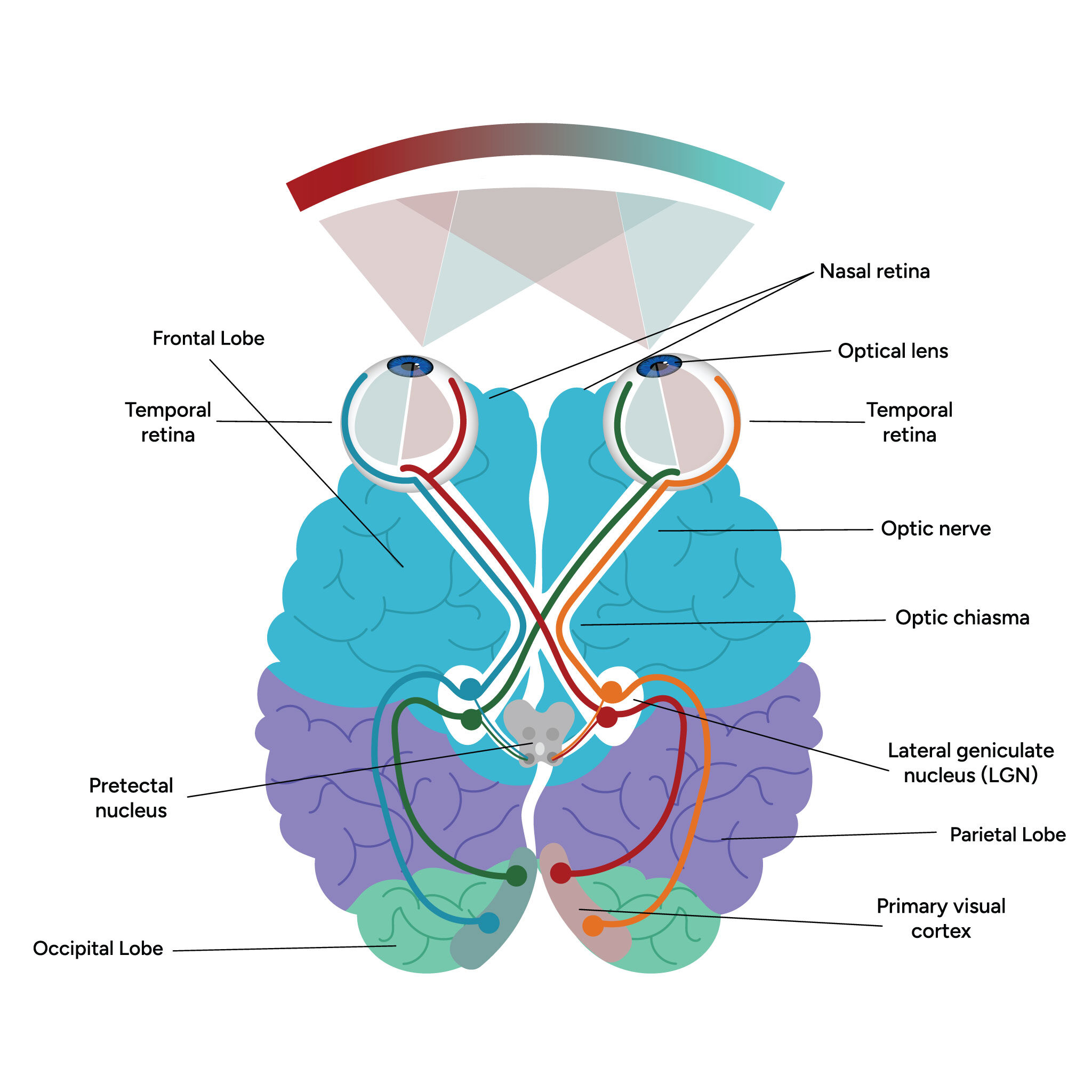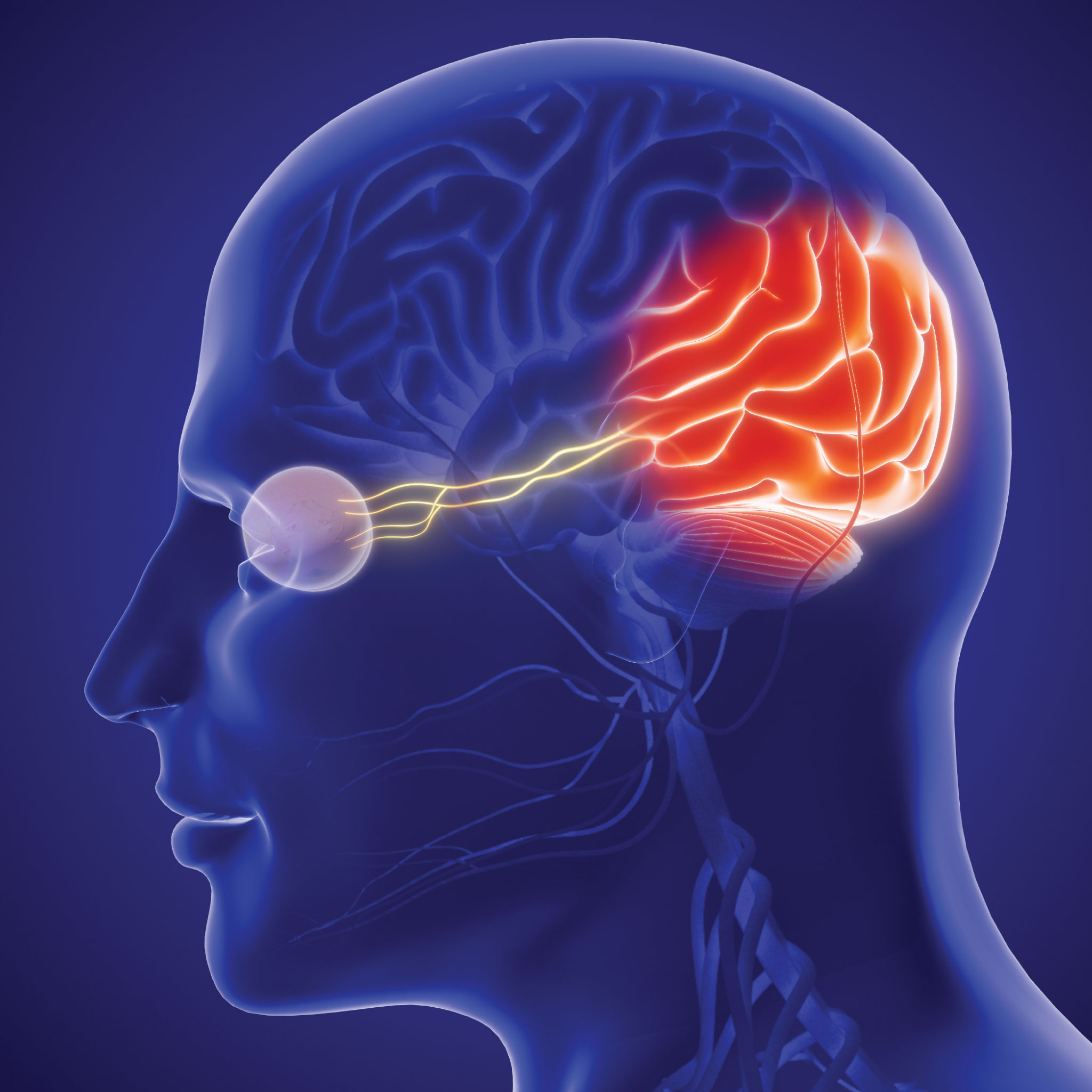A Tour of Your Vision
Here’s a fun fact to kick things off: You don’t really see with your eyes. You see with your brain.
From light hitting your eye to a full image appearing in your mind — your body has a remarkable visual pipeline. Here are the steps.
Step 1: Light Enters the Eye
We’ll start with an object you’re looking at. Light bounces off of it and enters your eye, traveling through:
- The cornea
- The lens
- The vitreous humor (the gel inside the eye)
Somewhere along the way, the image flips upside down and lands on your retina. Don’t worry about that upside-down part — your brain flips it back for you.
What If the Image Isn’t Clear?
If the cornea and lens can’t focus the image sharply on the retina, you’ll get blurry vision. That's when we step in with glasses or contact lenses. These act as a third lens to help focus the image properly on the back of your eye.
Your Eye's Autofocus
Your natural lens works like a camera’s autofocus:
- When young, it shifts focus easily from near to far.
- After age 40, that lens stiffens — a condition called presbyopia.
That’s why many people need reading glasses later in life. It’s not your fault, your “autofocus” just isn’t what it used to be.
Step 2: The Brain Takes Over
Once the image hits the retina, it becomes data, and that data gets sent down the optic nerve.
Here’s where it gets interesting:
- Your right visual field gets processed in the left side of your brain.
- Your left visual field gets processed in the right side of your brain.
That’s why half of each eye’s data goes to each hemisphere.

Step 3: The Optic Chiasm
At the optic chiasm, the brain does some rerouting magic:
- Data from the right side of what you see is bundled and sent to the left brain.
- Data from the left side gets sent to the right brain.
This ensures both sides of your brain are handling one continuous, unified view of the world.
Step 4: The Thalamus (or LGN)
Next stop: the thalamus, also called the lateral geniculate nucleus (LGN).
Here’s what happens:
- The data gets pre-processed and filtered.
- About 33% of the incoming data is dropped off and never reaches your conscious awareness.
That might sound strange, but that “invisible” data still affects you.
Example: Try standing on one foot. Now close your eyes and try again. Lose your balance? That’s your brain using vision for balance — even if you're not seeing anything consciously.
Step 5: The Visual Cortex
Finally, the data lands in your visual cortex at the back of your brain. This is where you truly “see.”
Even if your eyes are crystal clear, things can go wrong here due to:
- Brain injuries
- Neurological conditions
- Sensory integration issues
That’s why some people with 20/20 vision still feel like something’s not quite right.

What “20/20” Really Means
When your doctor says you have 20/20 vision, all that means is: a clear image is forming on your retina.
It doesn’t mean you’re:
- Processing that image well
- Seeing comfortably
- Integrating the visual data properly
That’s why a normal eye exam might not tell the whole story.
